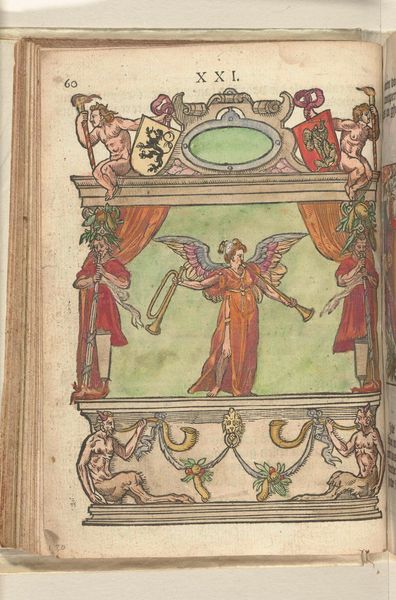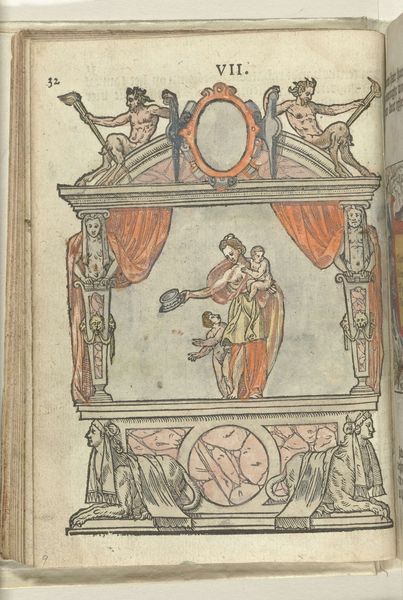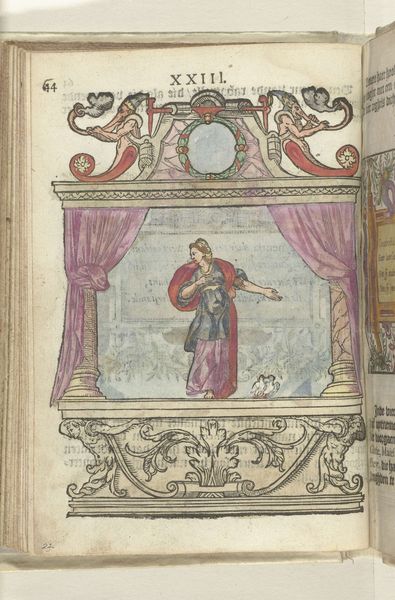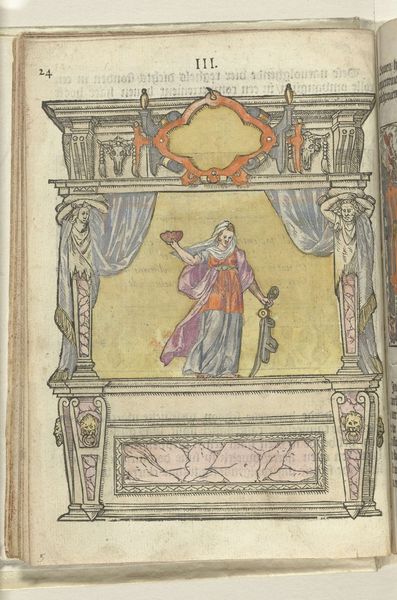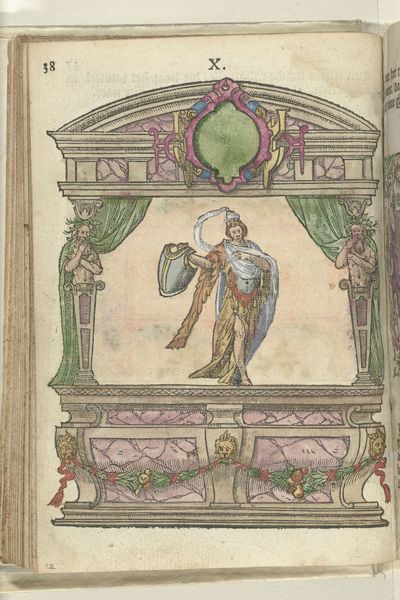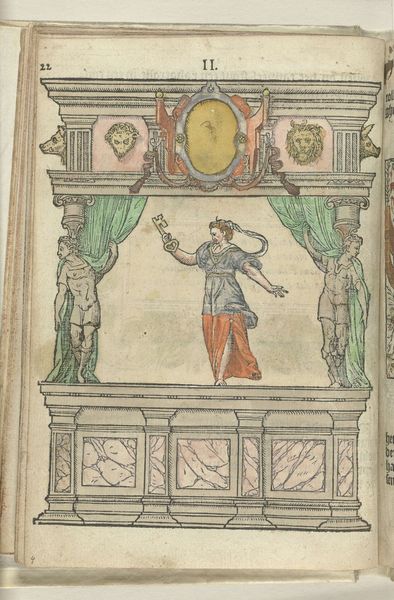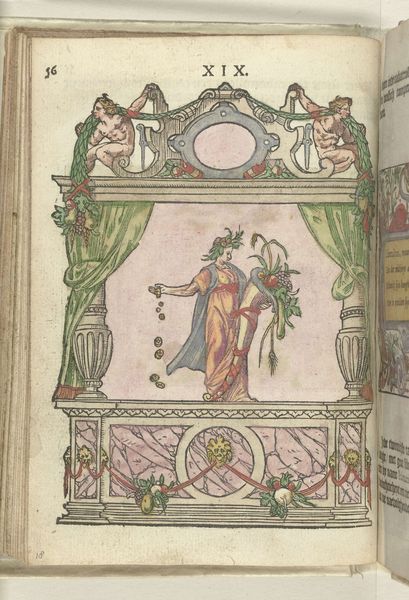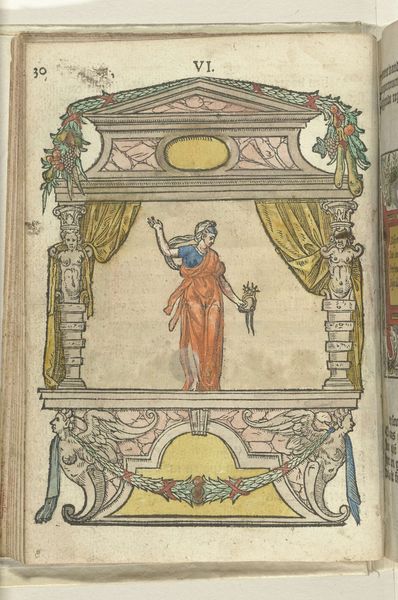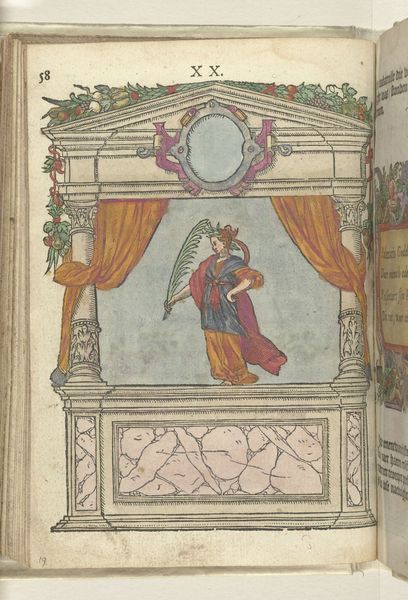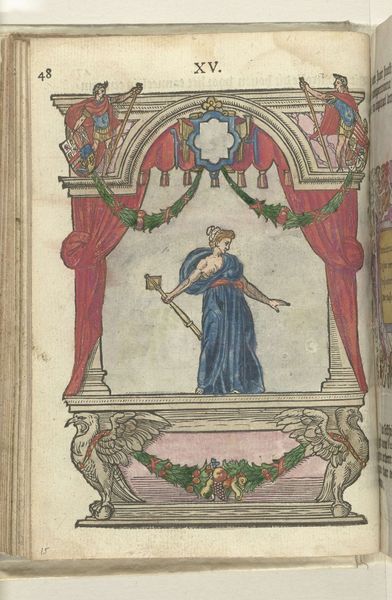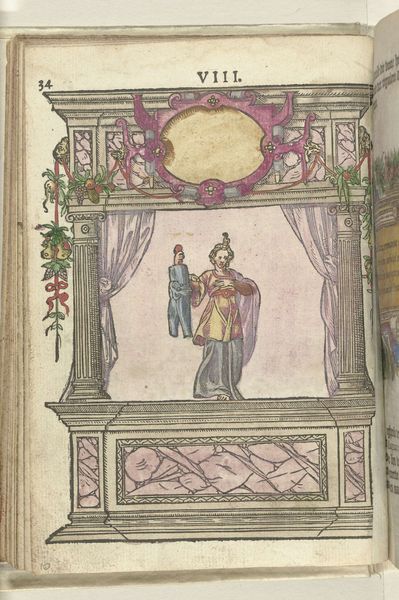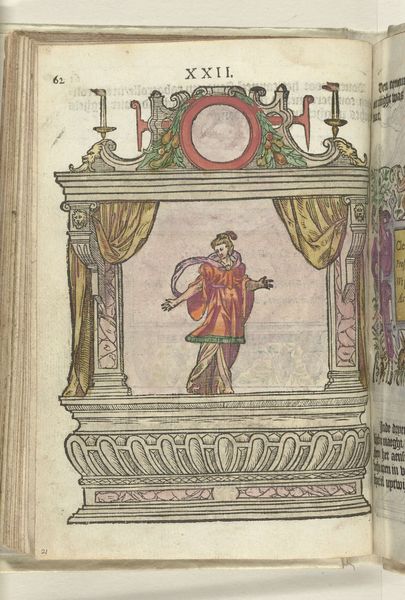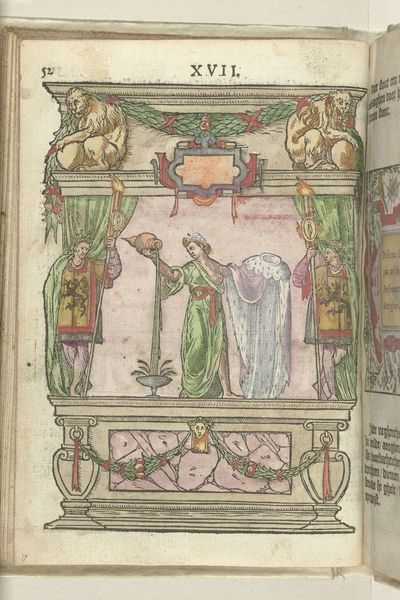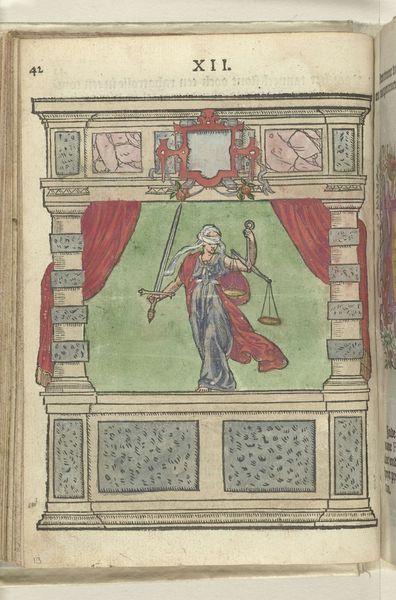
Toneel met personificatie van de Grootmoedigheid (Magnanimitas), 1578 1578 - 1579
0:00
0:00
coloured-pencil, print, fresco, pen, engraving
#
coloured-pencil
#
allegory
# print
#
mannerism
#
fresco
#
11_renaissance
#
coloured pencil
#
pen
#
history-painting
#
engraving
#
watercolor
Dimensions: height 155 mm, width 115 mm
Copyright: Rijks Museum: Open Domain
Curator: Looking at "Toneel met personificatie van de Grootmoedigheid (Magnanimitas)", crafted around 1578-1579 by Antoni van Leest, my initial sense is that it exudes an air of noble melancholy. Almost theatrical, don’t you think? Editor: Yes, theatrically overwrought! Immediately, I’m drawn to the medium - an engraving, likely printed on laid paper, then meticulously enhanced with pen, colored pencil and perhaps watercolor. A real material testament to Mannerist printmaking. Curator: Exactly. It's part of a series illustrating virtues. Here, we see Magnanimity personified – generosity of spirit. That figure offering armour feels like she is discarding earthly vanities. You almost feel the weight and then lightness. Editor: I am fascinated by the context of printed allegories like these. The layered process – from the cutting of the plate to the hand-application of color - democratized these lofty ideas by making accessible, portable versions of what would have otherwise been exclusive frescoes. Curator: It certainly brings it closer to us, doesn't it? Though the sheer density of classical references, like the reclining figures atop the structure and the sphinx-like forms on the base, still holds it slightly at arm's length. The cool pinks, blues, and muted oranges – what do they evoke for you? Editor: It creates a muted but luxurious materiality. Notice how the color application varies in thickness across the engraving lines and areas. Also, let's appreciate this color palette as a material signifier too – pigments were themselves commodities, signaling status and value. Curator: Very true. Knowing van Leest, there’s also an intimacy here – the very personal, devotional act of adding watercolor almost makes it a sacred object, but reproduced for mass, affordable dissemination, a complete democratizing reversal! It touches the heart. Editor: Well, it definitely touches the material record, bridging artisanal labor, dissemination, and this strange but significant gesture of translating virtues for public consumption through multiplied impressions. That tension for me is always thought provoking. Curator: Absolutely, it becomes not just a symbol of magnanimity but of its accessibility, thanks to materials and labor itself. It offers a whole new layer to its depth. Editor: Indeed. By carefully unpacking its physical construction, we understand a great deal about the world in which that virtue was valued—and commodified!
Comments
No comments
Be the first to comment and join the conversation on the ultimate creative platform.
